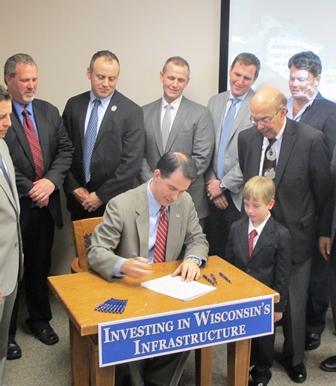Governor Walker signed Senate Bill 252, which allows the Department of Revenue (DOR) to reduce the base value of certain tax increment finance districts that have suffered significant declines from their original values. As one of the Wisconsin Economic Development Association’s (WEDA) top legislative priorities, this bill is another example of the retooling that’s continually occurring in Wisconsin’s economic development toolbox. Senator Gudex, Representative Schraa and Representative Hintz authored this bill, which received solid bi-partisan support.

“Tax Increment Financing is the most powerful economic tool for communities around the state,” said Schloss, President of WEDA. “However, when an industrial or commercial property experiences long-term vacancy, the property has sustained damage from a natural disaster or a property has been demolished, the base value of the property remains the same, even though the actual value may seriously decline. The discrepancy between this TIF base value and the actual marketplace value often presents a serious redevelopment impediment.”
Many Wisconsin communities will be able to utilize this legislation, including Oshkosh where the Governor signed the bill. “The economic downturn in 2008 hurt property values all over Wisconsin,” said Rob Kleman, Senior Vice-President of Economic Development at the Oshkosh Chamber of Commerce. “Oshkosh’s Tax Incremental District (TID) 20 and other districts in decrement will now have a better chance to jumpstart new development, increase construction jobs, and grow Wisconsin’s tax base for the future.”
To reduce the value of a TID, a city or village may adopt a resolution, subject to joint review board approval, asking DOR for the reevaluation. In order to qualify for the reduction, the TID must have a situation where the current aggregate equalized value of all the taxable property within the TID is at least 10 percent less than the current value of the TID’s tax incremental base, for at least two consecutive years. Current estimates suggest there are approximately 45 communities throughout Wisconsin that could take advantage of this new legislation.